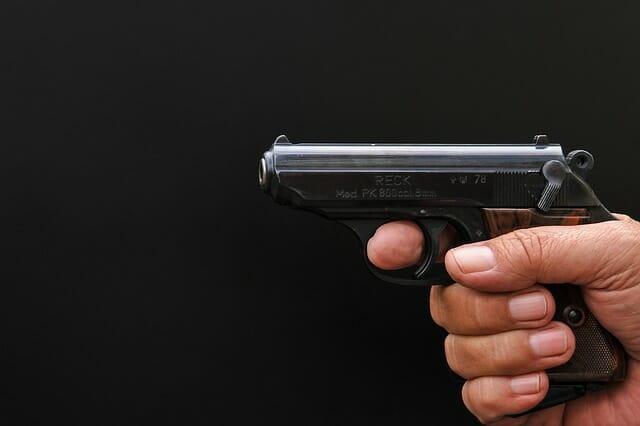|
Listen To The Article
|
Editor’s note: the writer is an active duty officer in the military.
If you are new to shooting or are unhappy with your shooting abilities, here you will find some basic shooting techniques to become a better shot.
Becoming a better shooter takes more than simply going to the range and shooting. While that will probably help a little bit, the only way to improve is by changing your techniques – techniques I learned early during my military service.
Since I’m directing this article at both skilled shooters and beginners alike, I should say something very important at the outset. Please ensure that you have zeroed your weapon and know how to properly and safely operate it.
One can break proper shooting technique down into three main categories: shooting position, breathing and trigger squeeze.
Shooting Position
Shooting position refers to how you position your body and your weapon while you are shooting. With a long gun, there are a few key things to keep in mind. The weapon should be firmly positioned against your body, in the pocket between your shoulder and your chest. Your head should be pressed against the stock of the weapon in a comfortable spot that you can easily return to each time you shoot. Aiming down the sights becomes much easier and more natural when you position your head in the exact same way each time. Your non-firing hand should have a light grip, but also should be slightly pulling the weapon into your shoulder.
With a handgun, your grip should be the exact same each time you shoot. There are many different ways to hold a handgun. My recommendation would be to practice with all of them until you find what works best for you. Personally, I like to have both of my thumbs on the side of my pistol, pointing downrange. I also like to put a little tension on the weapon by pulling a little with my forward hand against my locked elbow. For me, this limits recoil and makes it easier to reacquire a target.
As far as your body position, you want to have your elbows locked, and you should be in a slightly crouched position so that the weapon is at eye level. Similar to what was mentioned above, get used to shooting in the same body position every time, as it will make aiming come much easier. Usually, when someone has trouble aiming down the sights, it’s because of their body position. Regardless of weapon, get comfortable shooting in the same position. You’ll be surprised how easy it becomes to aim.
Breathing
The next step is breathing. While you are breathing and your arms are in your shooting position, they will naturally move up and down slightly. This causes your weapon to move up and down slightly, which throws off your aiming ability. There are two easy ways to fix this problem. Either hold your breath momentarily to steady your aim or shoot in between exhaling and inhaling. In a controlled situation, shooting between breaths is preferable, but in a high-stress situation, holding your breath will work, as well.
Black Ops Shooting Skills Leaked To Civilians For The First Time — Click Here To Learn More
Trigger Squeeze
The final tip may be the most important. A good trigger squeeze will save you tons of heartache at the range. The fundamentals of a good trigger squeeze are a slow, controlled pull followed by a slow, controlled release. Jerking the trigger back will cause you to twitch the weapon slightly, which results in inaccuracy. Many people teach you to “pull the slack” out of the trigger, which means pulling the trigger back to the final positive block before the firing pin goes home. Practice on your unloaded weapon.
Most weapons have a slight stop in the trigger, right before it engages. After “pulling the slack” out of the trigger and then firing the weapon, keep the trigger held back momentarily. This prevents a jerky release, which once again moves the weapon slightly and interferes with your ability to continue looking down the sights to reacquire your target. Then, slowly release the trigger back to that positive block, ready to shoot again. One last tip on pulling the trigger – try not to anticipate the shot. If you are anticipating the recoil, you will jerk the weapon and have an inaccurate shot.
These three simple tips will almost certainly improve your shooting ability. When I just want to practice shooting, I usually shoot four rounds at a time and judge each iteration to see what I need to improve. You will find that it gets easier and you improve each iteration that you shoot. Practicing shooting using these tips will allow you to develop muscle memory so that in the event the unpredictable does happen, you will be ready to accurately engage the threat.
What advice would you add? Share your tips in the comments section below:
